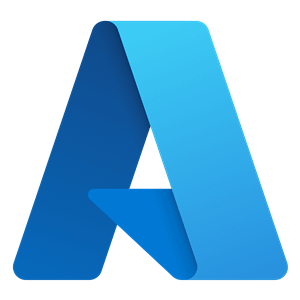Designing & Implementing Microsoft DevOps Solutions
In this course you will learn to
- Plan for the transformation with shared goals and timelines
- Select a project and identify project metrics and key performance indicators (KPIs)
- Create a team and agile organizational structure
- Design a tool integration strategy
- Design a license management strategy (e.g., Azure DevOps and GitHub users)
- Design a strategy for end-to-end traceability from work items to working software
- Design an authentication and access strategy
- Design a strategy for integrating on-premises and cloud resources
- Describe the benefits of using Source Control
- Describe Azure Repos and GitHub
- Migrate from TFVC to Git
- Manage code quality including technical debt SonarCloud, and other tooling solutions
- Build organizational knowledge on code quality
- Explain how to structure Git repos
- Describe Git branching workflows
- Leverage pull requests for collaboration and code reviews
- Leverage Git hooks for automation
- Use Git to foster inner source across the organization
- Explain the role of Azure pipelines and its components
- Configure agents for use in Azure pipelines
- Explain why continuous integration matters
- Implement continuous integration using Azure pipelines
- Define site reliability engineering
- Design processes to measure end-user satisfaction and analyze user feedback
- Design processes to automate application analytics
- Manage alerts and reduce meaningless and non-actionable alerts
- Carry out blameless retrospectives and create a just culture
- Define an infrastructure and configuration strategy and appropriate toolset for a release pipeline and application infrastructure
- Implement compliance and security in your application infrastructure
- Describe the potential challenges with integrating open-source software
- Inspect open-source software packages for security and license compliance
- Manage organizational security and compliance policies
- Integrate license and vulnerability scans into build and deployment pipelines
- Configure build pipelines to access package security and license ratings
Included in this course
- Microsoft official courseware
- Exam voucher for certification exam
Prerequisites
All students must have a fundamental knowledge of Azure, version control, Agile software development and core software development principles. It would be helpful to have experience in an organization that delivers software.
Course Outline
- Get started on a DevOps transformation journey
- Introduce DevOps
- Choose the right project
- Describe team structures
- Migrate to DevOps
- Introduce source control
- Describe types of source control systems
- Work with Azure Repos and GitHub
- Work with Git for enterprise DevOps
- Structure Git Repo
- Manage Git branches and workflows
- Collaborate with pull requests in Azure Repos
- Identify technical debt
- Explore Git hooks
- Plan foster inner source
- Manage Git repositories
- Implement CI with Azure pipelines and GitHub actions
- Explore Azure pipelines
- Manage Azure pipeline agents and pools
- Describe pipelines and concurrency
- Explore continuous integration
- Implement a pipeline strategy
- Integrate with Azure pipelines
- Introduce GitHub actions
- Learn continuous integration with GitHub actions
- Design and implement a release strategy
- Introduce continuous delivery
- Explore release strategy recommendations
- Build a high-quality release pipeline
- Introduce deployment patterns
- Implement blue-green deployment and feature toggles
- Implement canary releases and dark launching
- Implement A-B testing and progressive exposure deployment
- Implement a secure continuous deployment using Azure pipelines
- Create a release pipeline
- Configure and provision environments
- Manage and modularize tasks and templates
- Automate inspection of health
- Manage application configuration data
- Integrate with identity management systems
- Implement application configuration
- Manage infrastructure as code using Azure, DSC and third-party tools
- Explore infrastructure as code and configuration management
- Create Azure resources using Azure resource manager templates
- Create Azure resources by using Azure CLI
- Explore Azure Automation with DevOps
- Implement desired state configuration (DSC)
- Introduce Chef and Puppet
- Implement Ansible
- Implement Terraform
- Implement security and validate code bases for compliance
- Introduce secure DevOps
- Implement open-source software
- Software composition analysis
- Static analyzers
- OWASP and dynamic analyzers
- Security monitoring and governance
- Design and implement a dependency management strategy
- Explore package dependencies
- Understand package management
- Migrate, consolidate and secure artifacts
- Implement a versioning strategy
- Create and manage containers using Docker and Kubernetes
- Design a container build strategy
- Implement Docker multi-stage builds
- Implement Azure Kubernetes Service (AKS)
- Explore Kubernetes tooling
- Integrate AKS with pipelines
- Implement continuous feedback
- Implement tools to track use and flow
- Implement route for mobile application crash report data
- Develop monitor and status dashboards
- Share knowledge within teams
- Explore SRE and design practices to measure end-user satisfaction
- Design processes to capture and analyze user feedback
- Design processes to automate application analytics
- Manage alerts, blameless retrospectives and a just culture
This class does not require installation of any software. The class is conducted in a remote environment that we will provide. You’ll only need a local computer with a web browser and a stable Internet connection. We recommend a recent version of Microsoft Edge, Mozilla Firefox or Google Chrome.
We recommend using two monitors in order to simultaneously view the training presentation and hands-on class work.
You’ll receive a link to join the class. We recommend using a headset instead of the computer’s microphone and speakers. You may also listen to the audio by phone.


